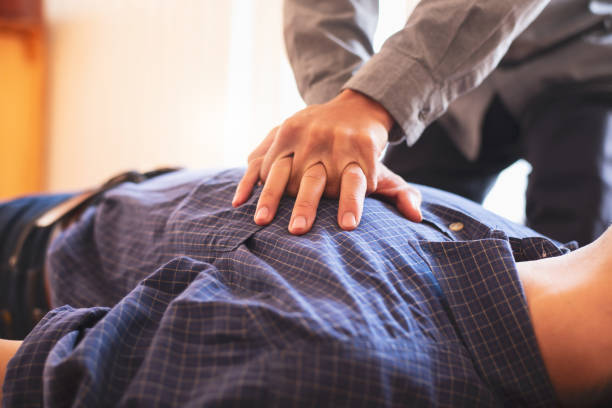LEARN CPR AND SAVE A PRECIOUS LIFE

CPR is an abbreviation for cardiopulmonary resuscitation. It’s when someone provides a person in cardiac arrest chest compressions to keep them alive until emergency aid comes. If you witness someone experiencing a cardiac arrest, dial 103 for ambulance/medical help and begin CPR right away until medical help arrives. In this blog, we have collated tips from a top cardiologist in Delhi on how to give CPR and save a life.
CPR should be performed only if someone is:
Unconscious and not breathing correctly
Unconscious but breathing is okay
In any of the above cases, call emergency services immediately and place the person in a proper recovery position.
How to Perform CPR in 5 Easy Steps:
Step 1: Gently shake the patient and ask for public assistance
Always check for risks before beginning to assist someone who is unconscious. A person experiencing a cardiac arrest will either not be breathing or will not be breathing properly. They will also be unconscious. To get a response, gently shake the person’s shoulders and inquire loudly, “Are you okay?”
Call for assistance loudly, and if someone is around, ask them to stay with you since you might need them. If you are alone, call people around loudly to draw attention to yourself, but do not leave the patient.
Step 2: Dial 103 (India ambulance service emergency number)
If the patient is not breathing or is not breathing normally: request people around to dial for an ambulance immediately and get help to locate a public access defibrillator (PAD). If no one is around, dial 103 (Ambulance service) before beginning compressions.
Step 3: Perform chest compressions.
Kneel next to the individual. Place one hand’s heel on the middle of their chest. Put your second hand on top of the first. Fingers should be interlocked. With your arms straight, press the chest bone down firmly and smoothly with the heel of your hand, so that the chest is forced down between 5-6 cm, and then release. Do this at a pace of 100 to 120 compressions every minute, or about 2 compressions per second.
Step 4: Continue
Continue until professional aid arrives and takes over, or the patient begins to regain some consciousness, such as coughing, opening their eyes, speaking, or breathing properly.
If you’re exhausted and if there’s someone around who can help, ask them to take over CPR. You may demonstrate what to do and take turns until emergency assistance comes.
Step 5: Use a defibrillator.
When a defibrillator is found, switch it on and follow the instructions.
If a shock is required, the defibrillator will notify you and instruct you to click the shock button. A defibrillator will shock the person without prompting. Do not touch the individual who is being shocked.